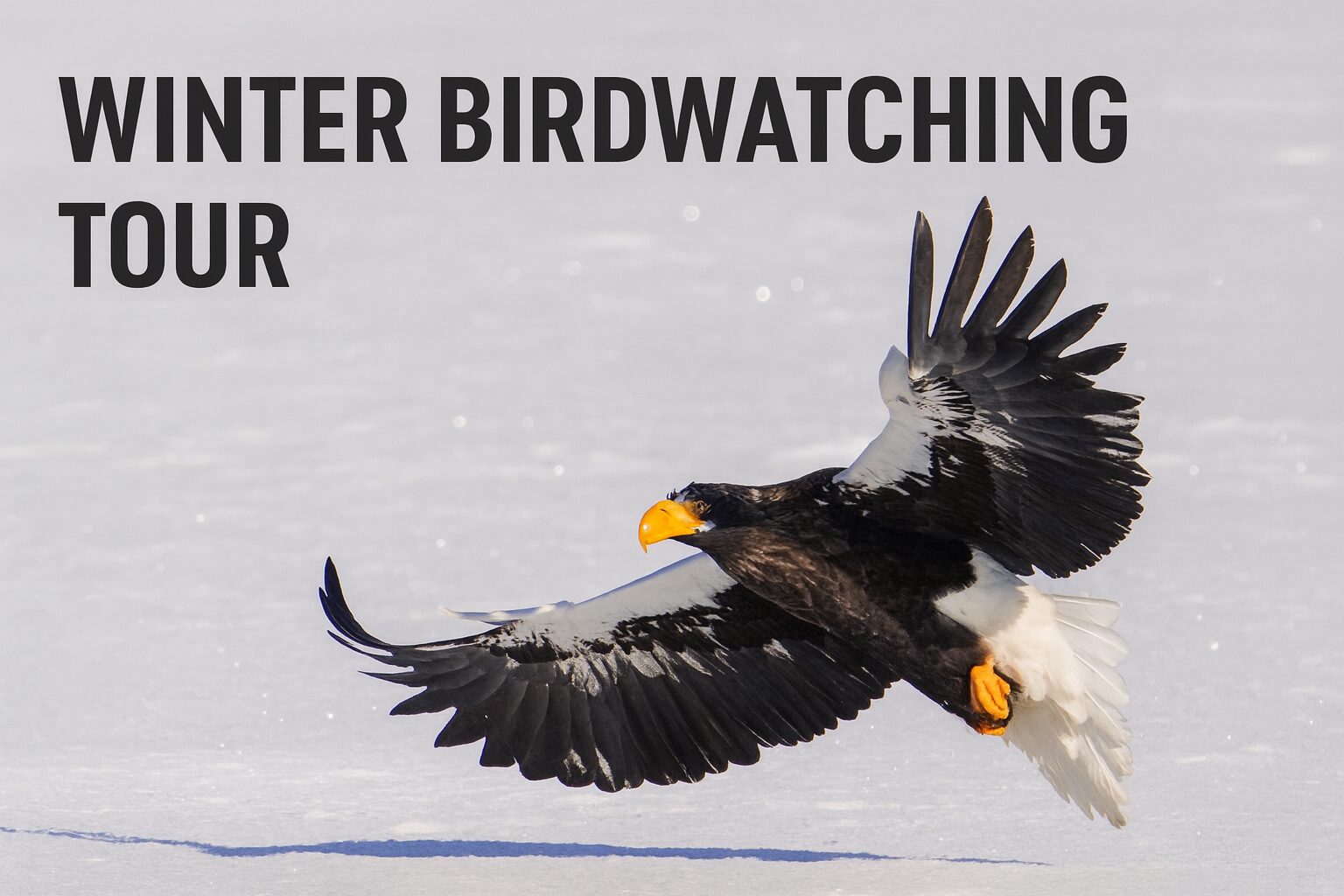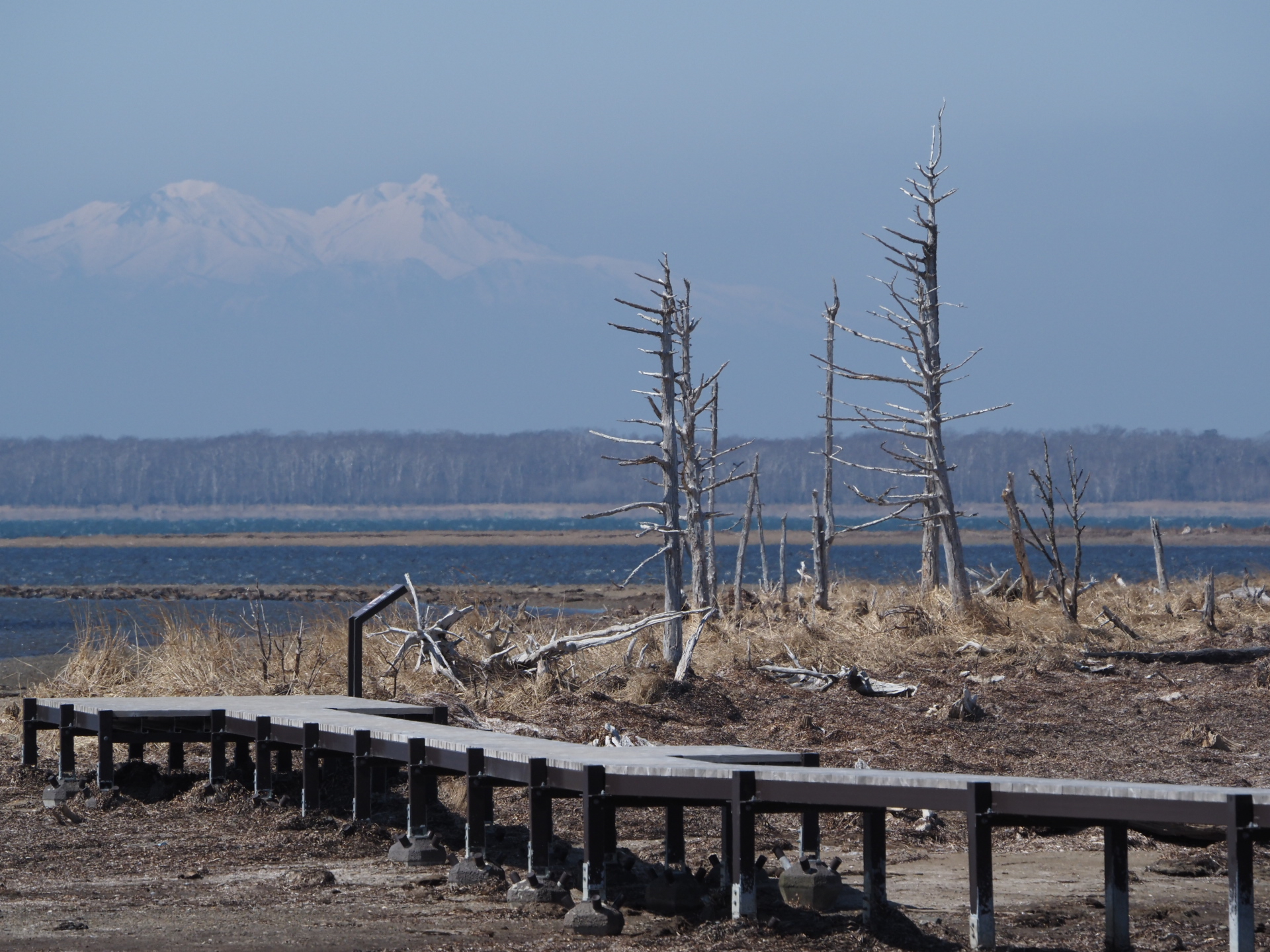
Take a Step Beyond Shiretoko: Discover the Serene Beauty of Notsuke Peninsula
2024年11月17日

ODAITO NEST おだいとうネスト
-野付半島まで10分の個室ゲストハウスー
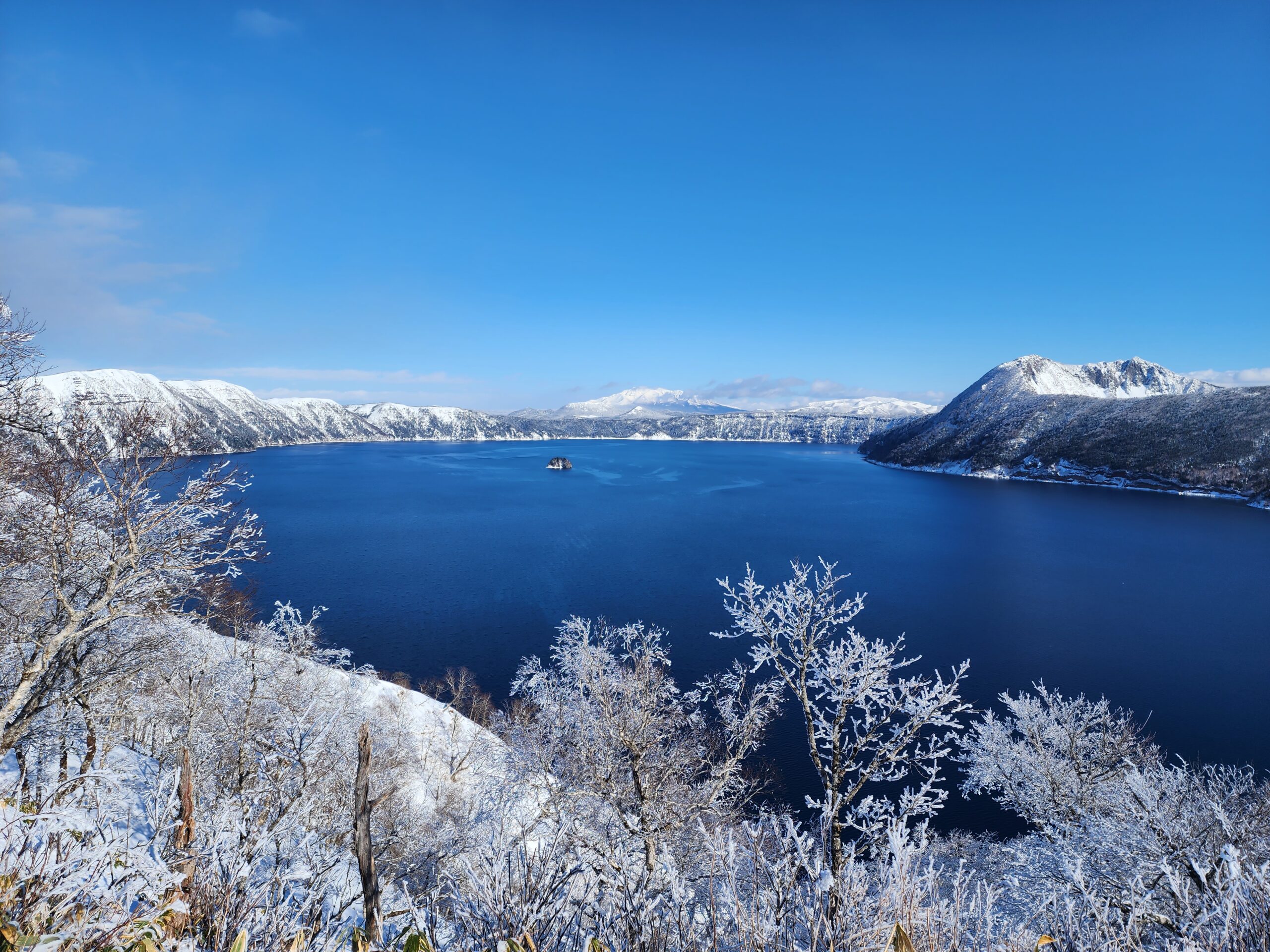
Winter in Eastern Hokkaido is something truly special. Imagine vast, snow-covered landscapes, sparkling drift ice along the coast, and the quiet beauty of nature at its most peaceful. Whether you’re seeking adventure or simply want to take in the stunning scenery, Eastern Hokkaido offers a winter experience like no other.
In this guide, I’ll share some of the region’s hidden gems and unique winter activities, from drift ice walks to snowshoeing in serene, snow-blanketed forests. Get ready to discover the magic of a winter wonderland that feels untouched by time!
Shiretoko Peninsula (Utoro Area)
The west side of the Shiretoko Peninsula, particularly the Utoro area, is renowned for its dramatic cliffs shaped by waves and drift ice. The winter landscapes here offer a different beauty from the peak summer season, making it a place of magical winter charm.
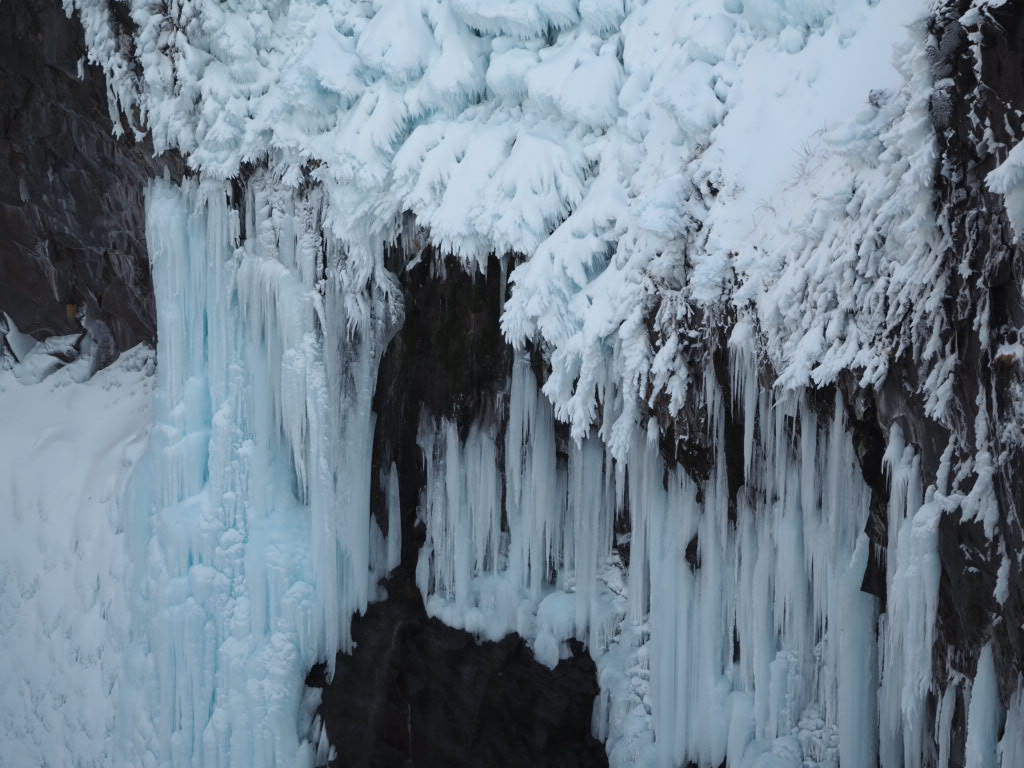
In winter, Furepe Falls transforms into a stunning blue icefall. The water seeps out and freezes, creating a unique natural sculpture. The name “Furepe” is derived from the Ainu language, meaning “Red Water,” and while theories vary on its origins, the frozen waterfall is a sight to behold, reflecting a pale blue under the sunlight.

Famous for its sunset views over the drift ice, Puyuni Cape offers a breathtaking sight during the drift ice season (February to March). The sun sets into the Okhotsk Sea, casting golden and orange hues over the white ice fields, creating a picture-perfect moment.
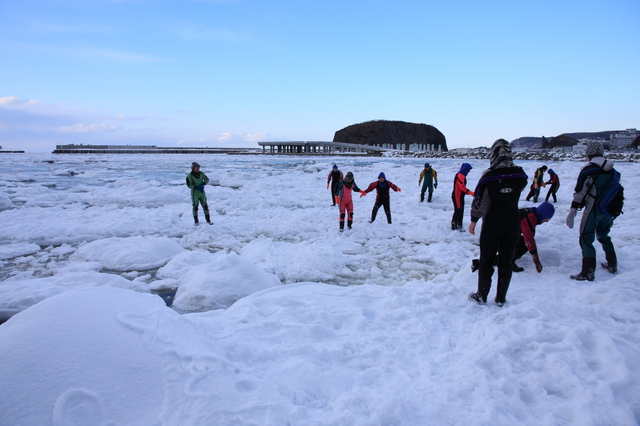
Walking on the drift ice is a popular winter activity in Shiretoko. Guided tours allow visitors to safely walk and even float on the frozen sea. The cold air, combined with the vast expanse of white ice, offers an unforgettable experience.
| Tour Company | Features | Season | Website |
|---|---|---|---|
| Shinra | 4 daily tours, each offering unique experiences | Feb-Mar | Shinra Website |
| Godzilla Rock Tours | Local expert guides ensure safety during walks | Feb-Mar | Godzilla Tours |
| Picchio Shiretoko | Aerial views and underwater exploration during tours | Feb-Mar | Picchio Shiretoko |
| SOT! | Shiretoko Five Lakes winter tour with ice walk | March | SOT Website |
| MEPS | Drift ice walk specialists with professional guides | Feb 1-Mar 10 | MEPS Website |
Facing the Okhotsk Sea, the southernmost point for drift ice in the Northern Hemisphere, Shiretoko sees an annual arrival of ice floes. On the Rausu side, where the ice density is lower, you can enjoy a different kind of drift ice tour.
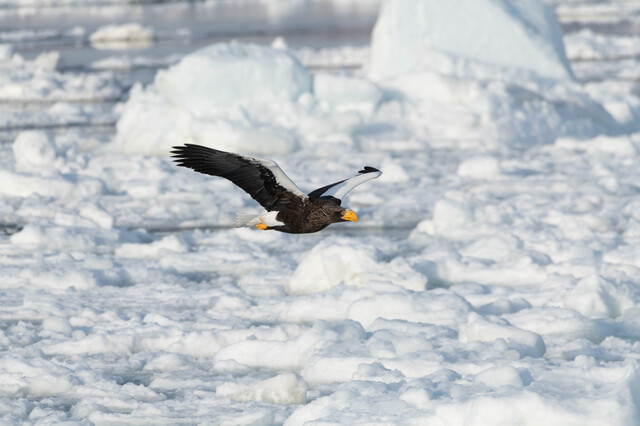
Unlike the large icebreakers used elsewhere, Rausu offers tours on smaller cruisers and boats, weaving through the drift ice. Alongside the stunning ice, you’ll have a high chance of spotting majestic Steller’s sea eagles and white-tailed eagles, as they flock here to feed. Rausu’s lower ice density allows these birds to hunt more easily, making this a popular spot for bird watchers.
| Tour Company | Features | Season | Website |
|---|---|---|---|
| Shiretoko Nature Cruise | Comfortable cabins and low vibration engines | Late Jan – Mid Mar | Shiretoko Nature Cruise |
| Rausu Tourism Ship Hamanasu | Veteran captain with fishing experience | Feb – Early Mar | Hamanasu Cruises |
| Ariran III | The fastest tour boat in Rausu | Late Jan – Late Mar | Ariran III Cruises |
| Godzilla Rock Rausu | Convenient 1-hour cruises twice daily | Late Jan – Mid Mar | Godzilla Rock Tours |
| Shiretoko Cruise Eijinmaru | Small boat for a more immersive experience | Late Jan – Late Mar | Eijinmaru Cruises |
| Shiretoko Rausu Lincle | Sunrise cruises on a 10-person small boat | Late Jan – Late Mar | Lincle Cruises |
The Notsuke Peninsula is a narrow sandspit surrounded by the Okhotsk Sea on one side and Notsuke Bay on the other. In winter, the bay freezes over, creating the stunning “Ice Horizon,” where the blue sky and white ice seem to stretch infinitely.
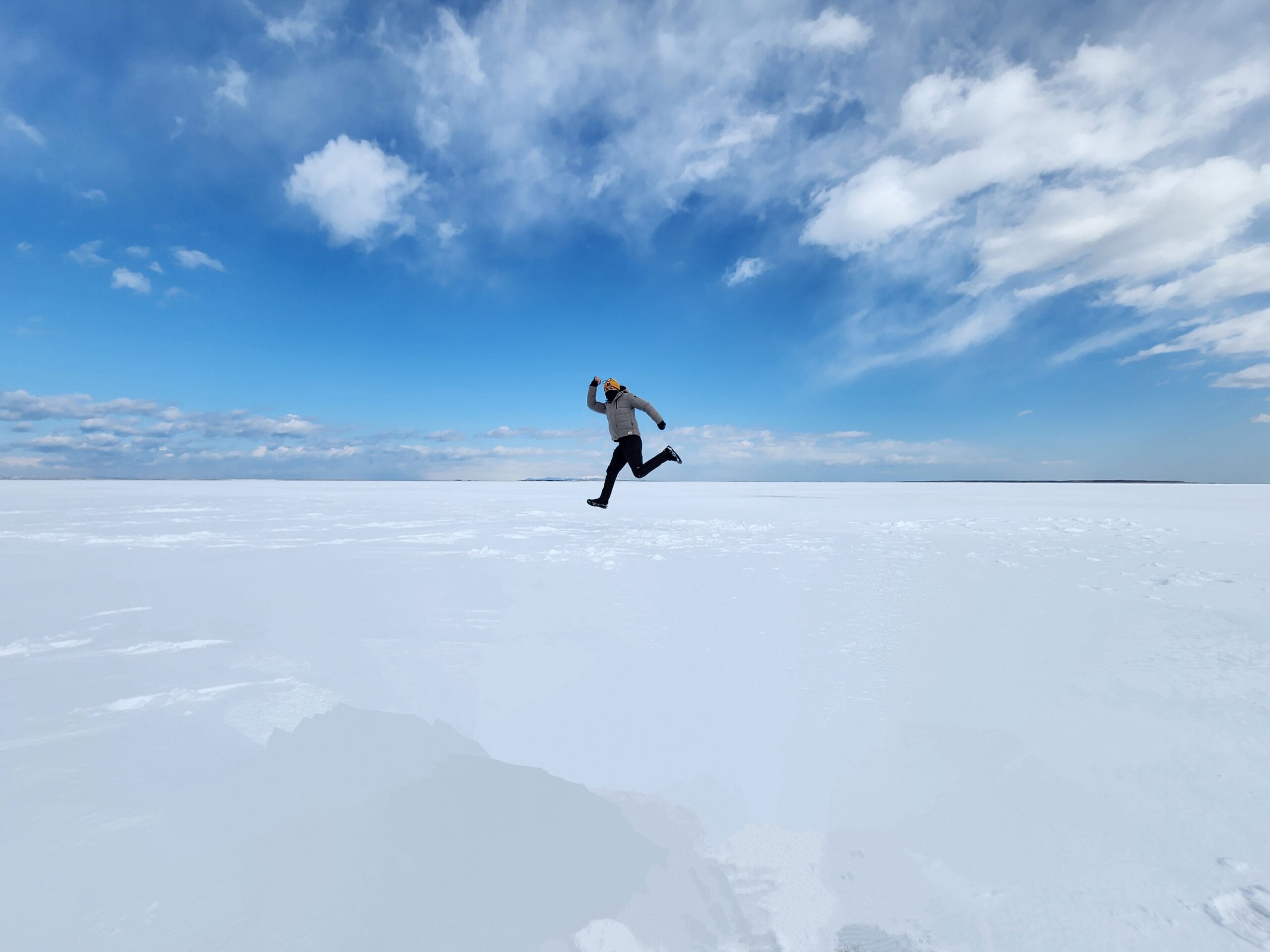
This unique phenomenon, called “Ice Horizon,” offers fantastic opportunities for photography. The frozen bay provides a vast, open landscape of white ice and blue sky, making it a must-see spot for nature lovers and photographers.
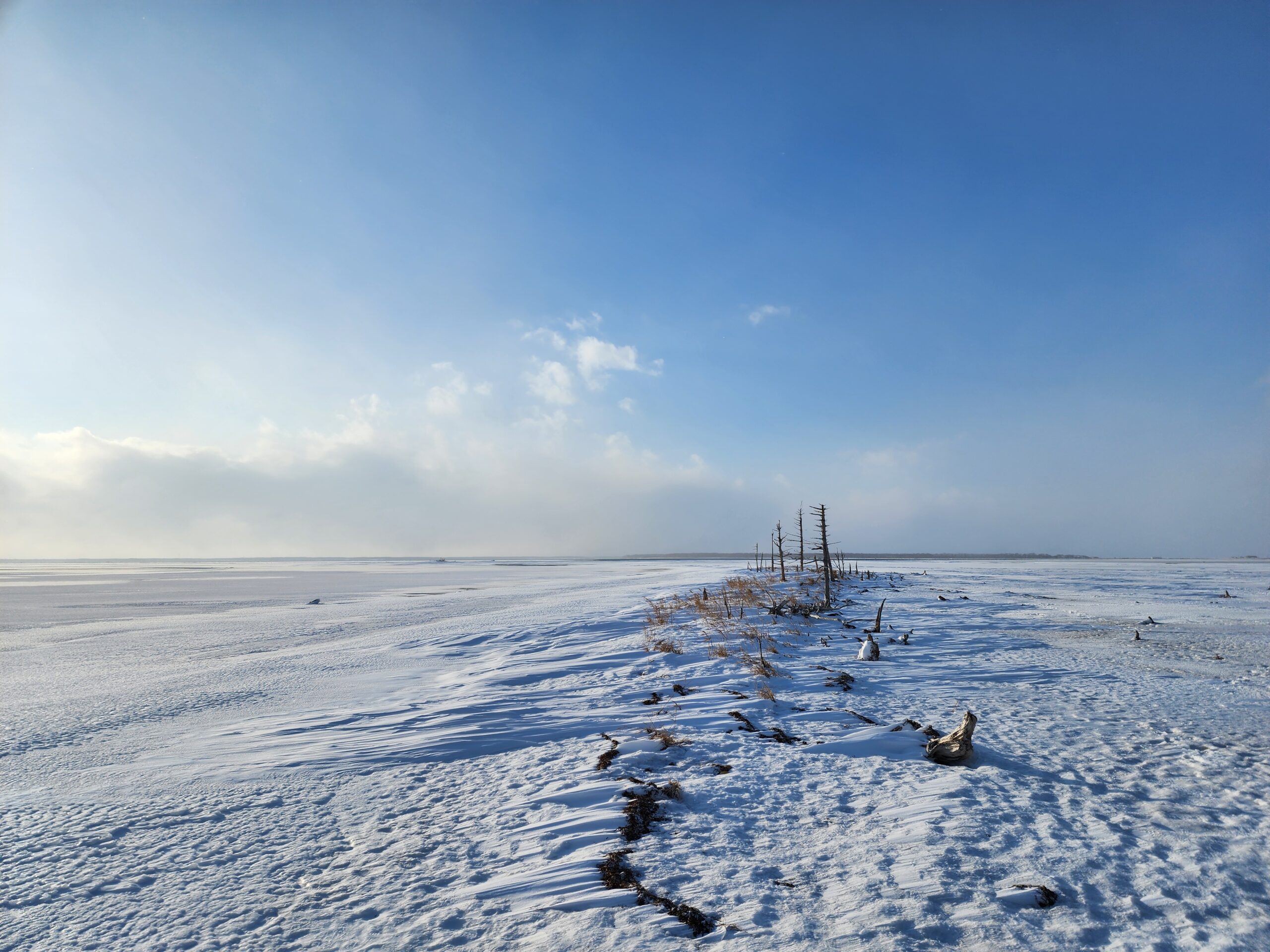
For more details on Notsuke Peninsula, including travel tips and recommended attractions, check out the guide below:
Your Complete Guide to Notsuke Peninsula
Nemuro, located at the easternmost point of Japan, enjoys clear winter skies and lighter snowfall than other areas in Hokkaido, making it a great destination for winter exploration.
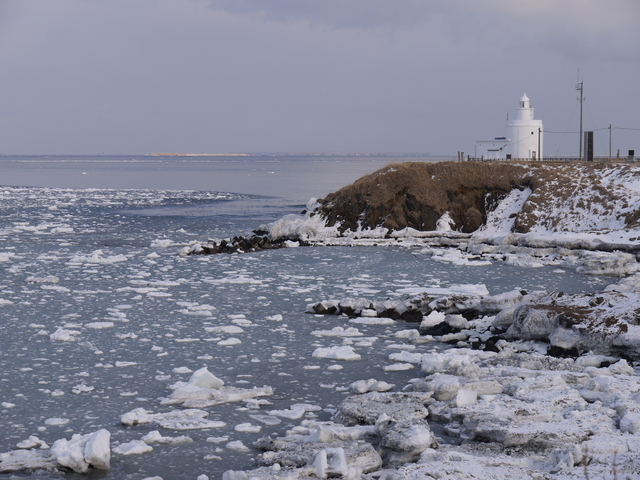
Cape Nosappu is one of the southernmost points where drift ice can be seen, with stunning views of the ice stretching across the Nemuro Strait towards the Shiretoko mountain range.
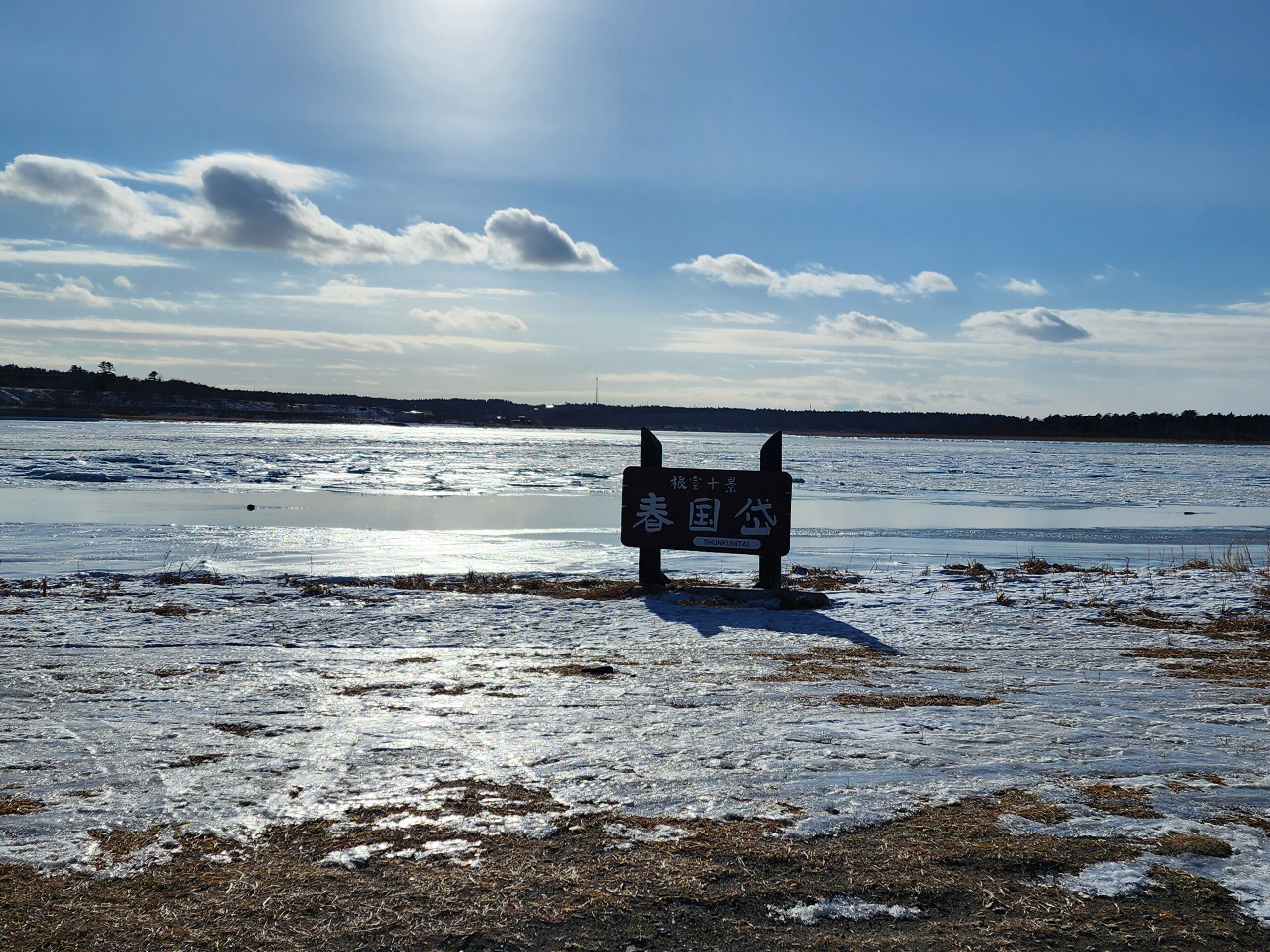
Shunkunitai, an 8 km long sandbar, transforms into a winter wonderland, drawing birdwatchers and nature lovers alike.

Kushiro’s winter is often underestimated, but it offers plenty of hidden gems. The crisp, clear air of “Doto Blue Sky” makes for an ideal setting for winter adventures.
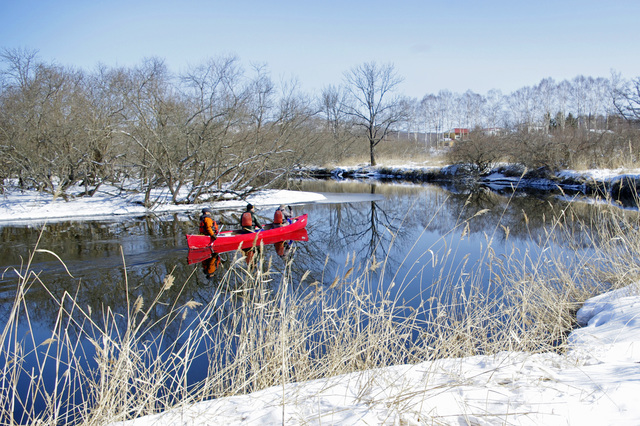
The Kushiro River flows through the untouched Kushiro Marsh, providing a serene and private winter canoeing experience. Unlike the crowded summer season, winter offers peaceful solitude as you paddle past snow-covered banks and frosty trees. You might also encounter rare wildlife such as white-tailed eagles, cranes, and Ezo deer.

Lake Akan, surrounded by mountains, experiences extreme winter temperatures, often reaching -15°C to -20°C. However, these conditions create the perfect setting for a rare natural phenomenon.
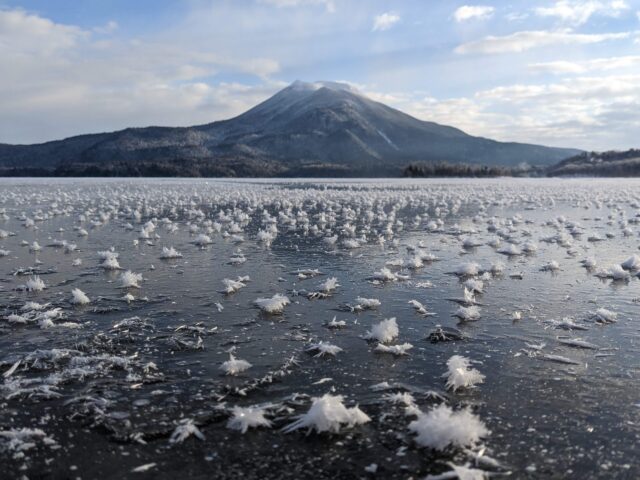
Frost Flowers are delicate ice crystals that bloom on the lake’s frozen surface when the conditions are just right: thin ice, temperatures below -15°C, and no wind. Lake Akan is one of the few places in Hokkaido where this rare sight can be seen as late as March, thanks to the warm waters from hot springs beneath the lake preventing thick ice formation.
The name Mashu Lake comes from the Ainu word “Kamui-to,” meaning “Lake of the Gods,” while Kussharo originates from “Kutcharo,” meaning “outlet of a lake.”
Together with Lake Akan, these three caldera lakes form the vast area known as Akan-Mashu National Park, designated in 1934. Over 90% of the region is still preserved as a nature reserve, offering untouched wilderness.
Located inland, winter temperatures drop as low as -25°C to -30°C, making it one of the coldest areas in Hokkaido. However, the clear winter skies allow you to enjoy stunning landscapes formed by the harsh environment.

Known as the “Foggy Lake Mashu” during the summer, where mist covers the lake half the time, winter offers clear views of the deep blue waters, referred to as “Mashu Blue.” Occasionally, the lake freezes over completely, a rare occurrence that only happens once every few years.
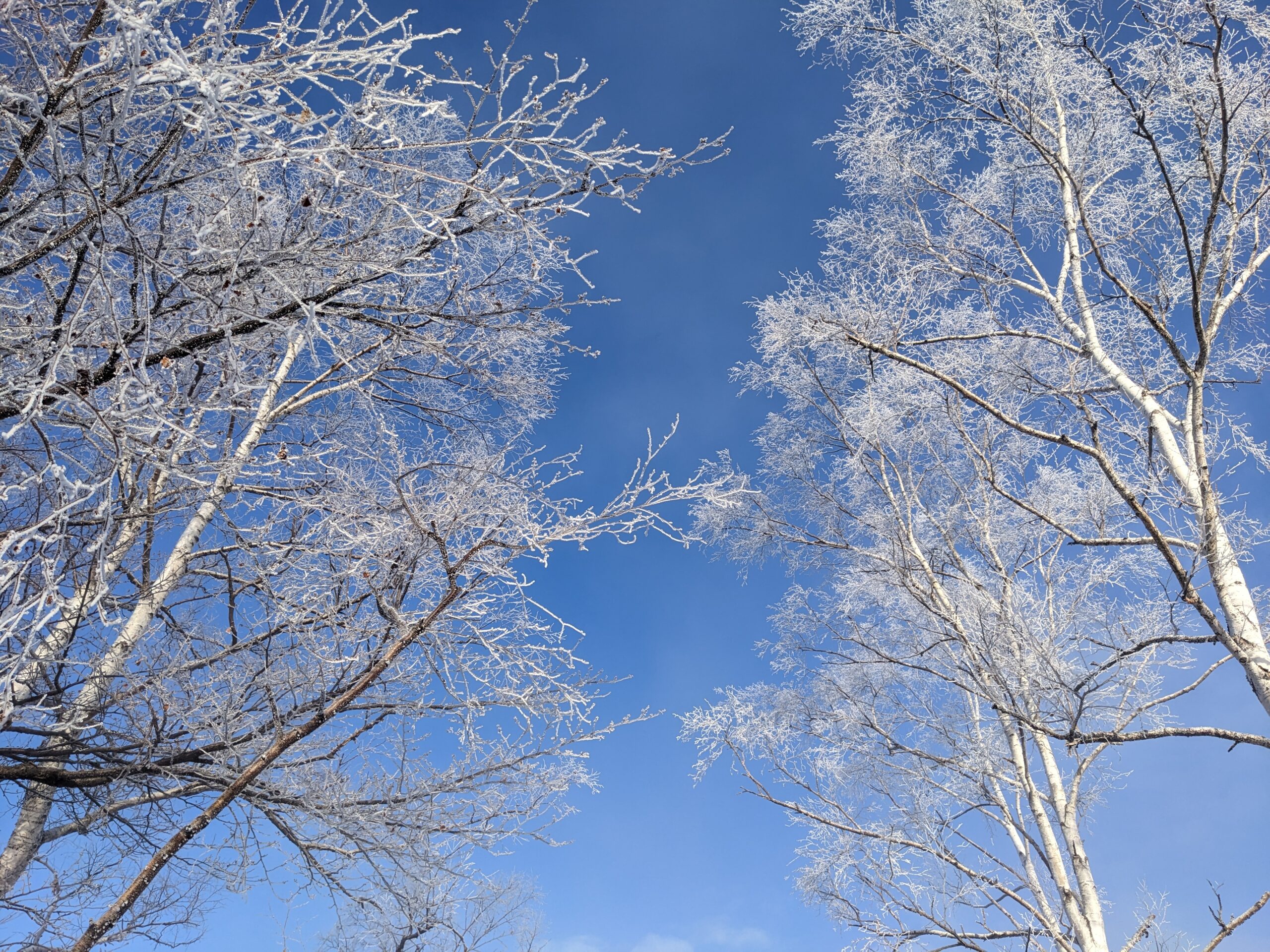
Kawayu Onsen, a hot spring town known for its therapeutic sulfur baths, is surrounded by coniferous forests that are beautifully adorned with snow-covered trees during the harsh winter. The strong acidic nature of the hot springs, known to dissolve iron nails in two weeks, offers unique health benefits.
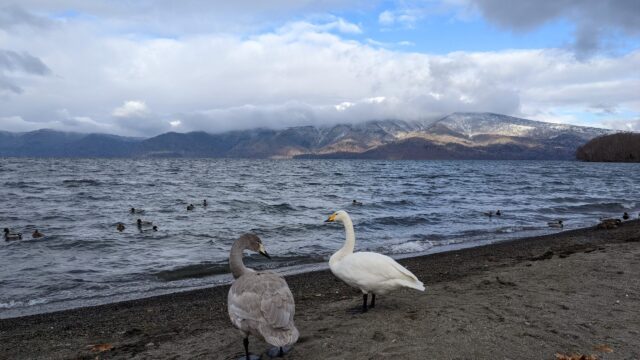
As Japan’s largest caldera lake, Kussharo Lake is a winter haven for migratory swans from Siberia. The lake partially freezes, leaving some warm water areas where hot springs emerge, creating a perfect resting spot for the swans.
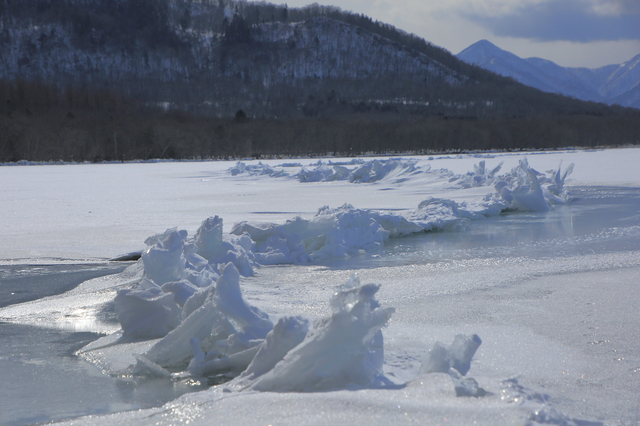

Bihoro Pass offers one of the most panoramic views in Hokkaido, with a clear 360° view of Kussharo Lake and its surrounding mountains. In winter, the crisp air and low humidity allow for especially vivid sights of the snow-covered landscape.
Abashiri is often thought of as a place with harsh winters and heavy snow. However, the cold here is relatively mild, and snow is lighter than in other parts of Hokkaido, making it an accessible destination in winter.

Abashiri is famous for its “Aurora” icebreaker ship, which operates in the winter months, offering tourists a unique opportunity to experience the power of breaking through the drift ice in the Okhotsk Sea. The ship operates only during the winter when the ice covers the sea, and passengers can experience the thrilling sound and feel of the ice breaking beneath the hull. You can also enjoy stunning views of the white expanse and possibly spot seals or eagles resting on the ice.
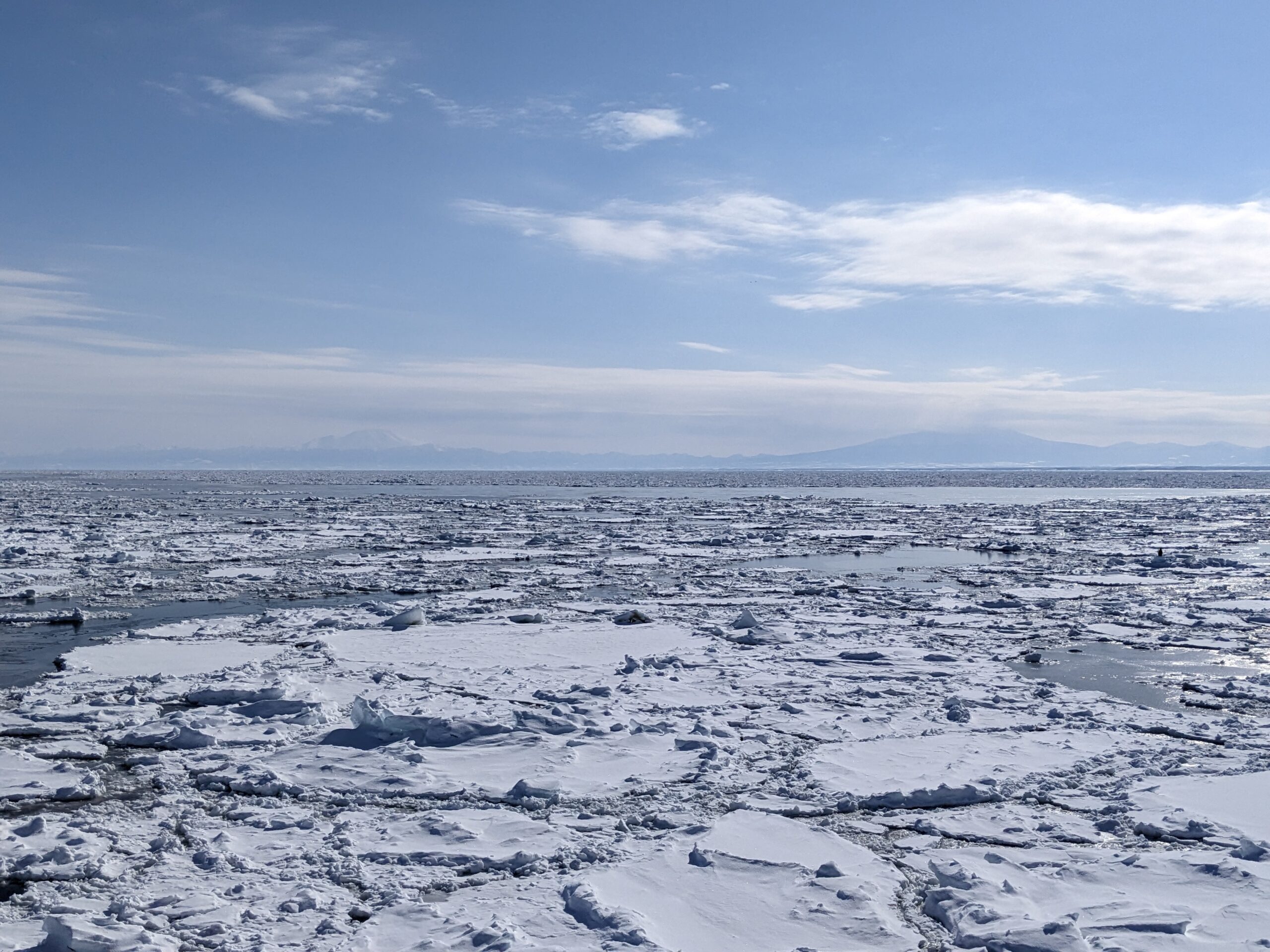
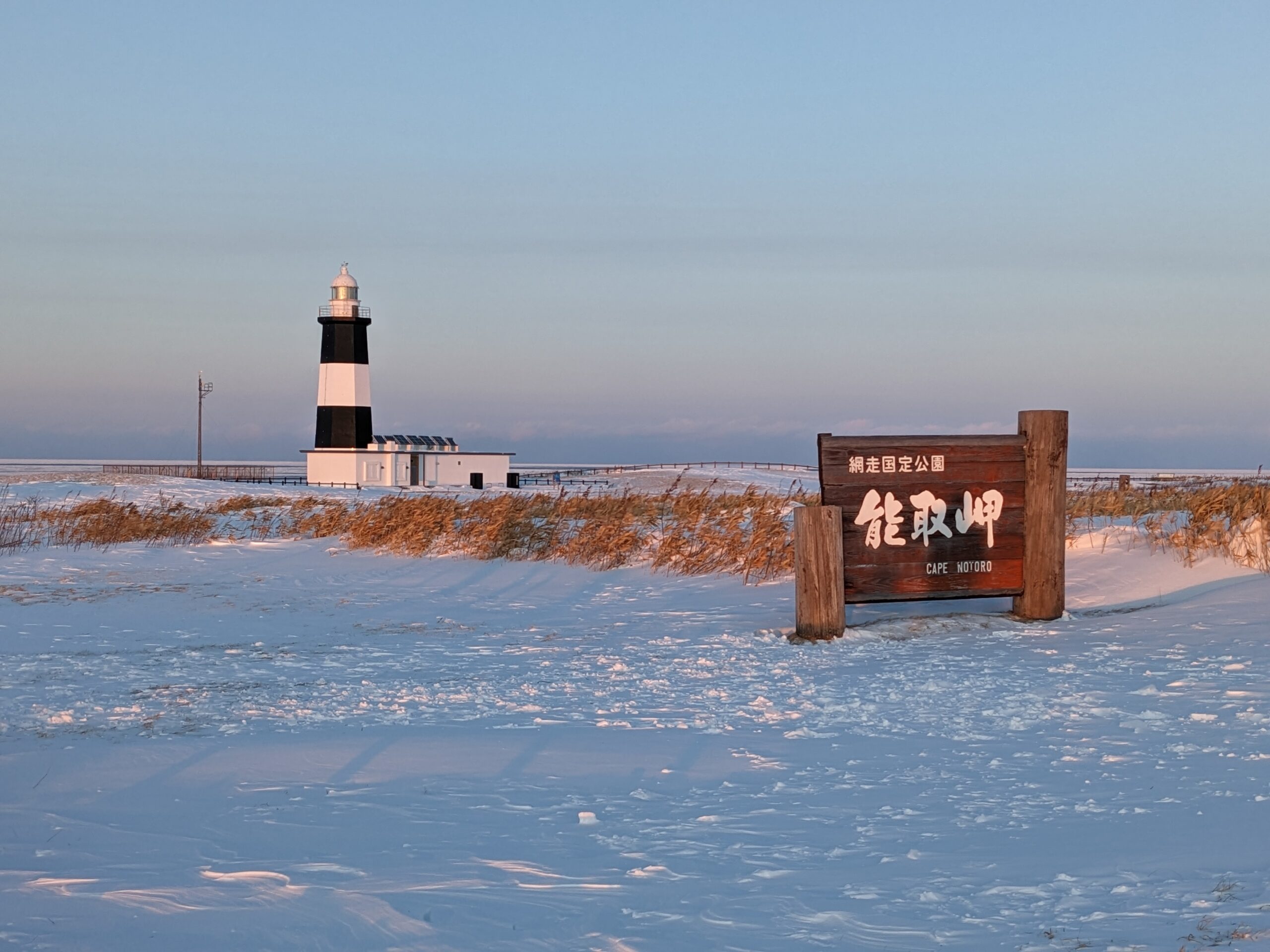
Notoro Cape juts out into the Okhotsk Sea, offering breathtaking views of the sea covered in white drift ice. The combination of deep blue seas and white ice creates an incredible contrast. On clear days, you can even see the Shiretoko mountain range in the distance. Notoro Cape is also a great spot for watching eagles flying over the ice.

